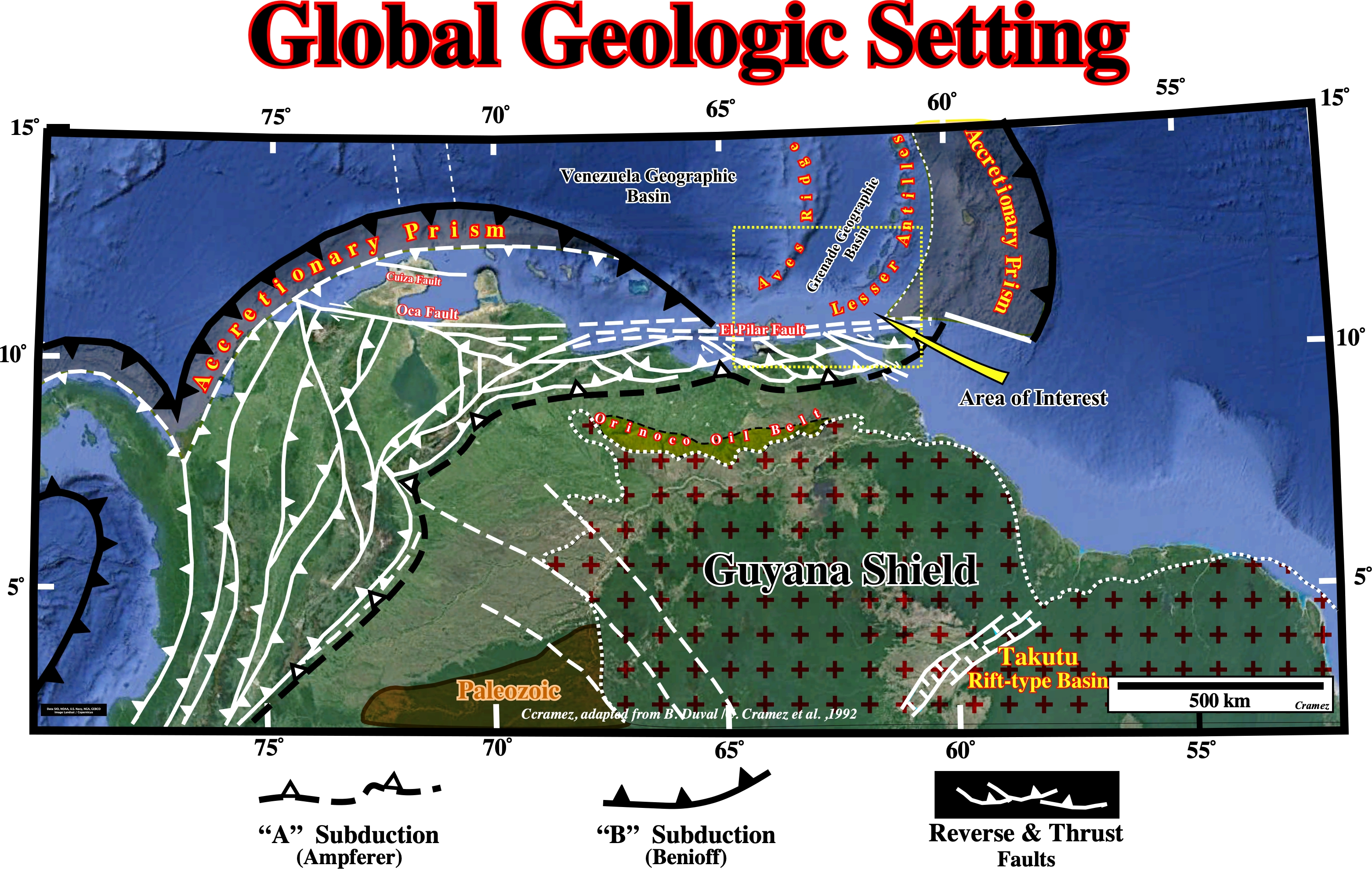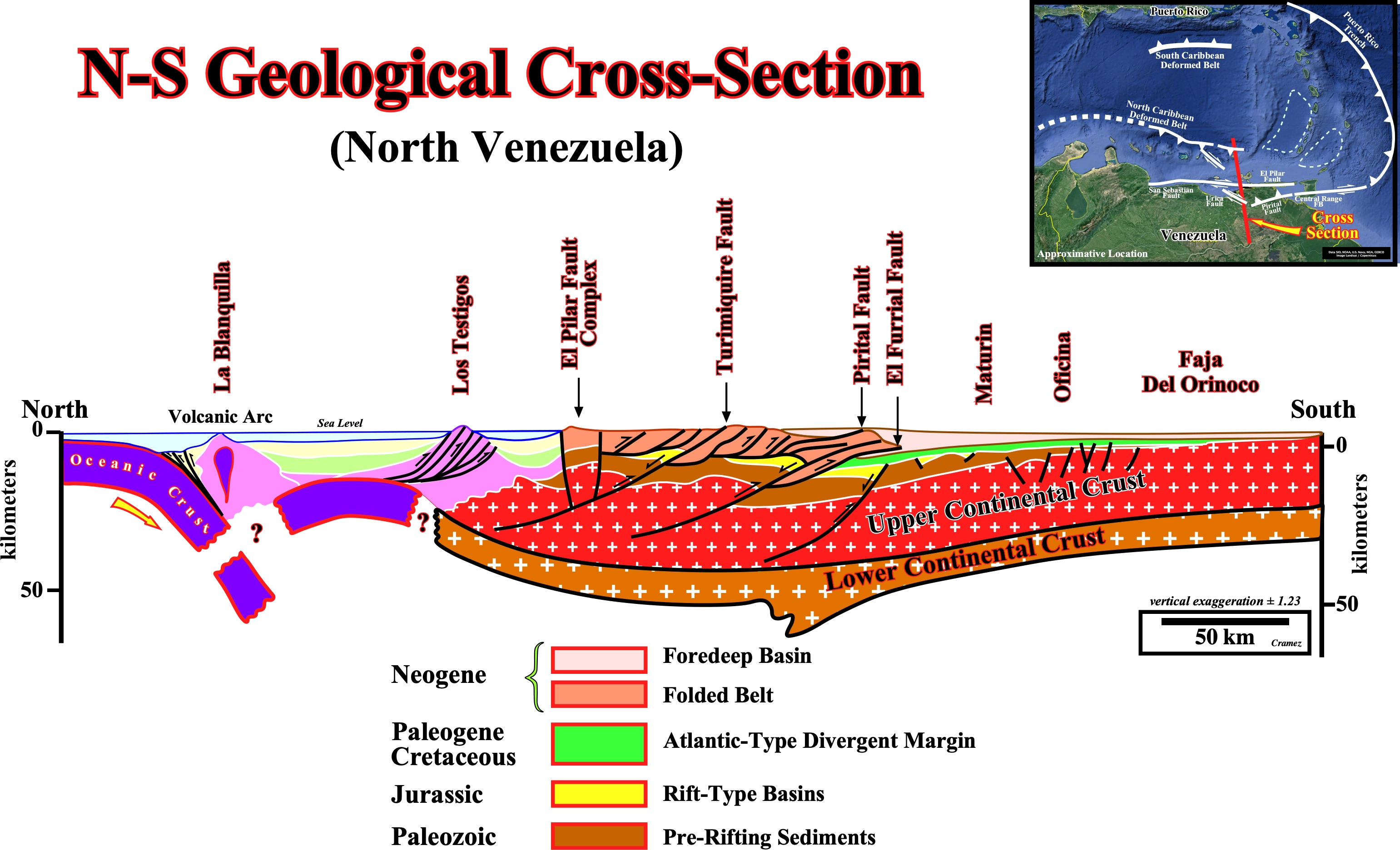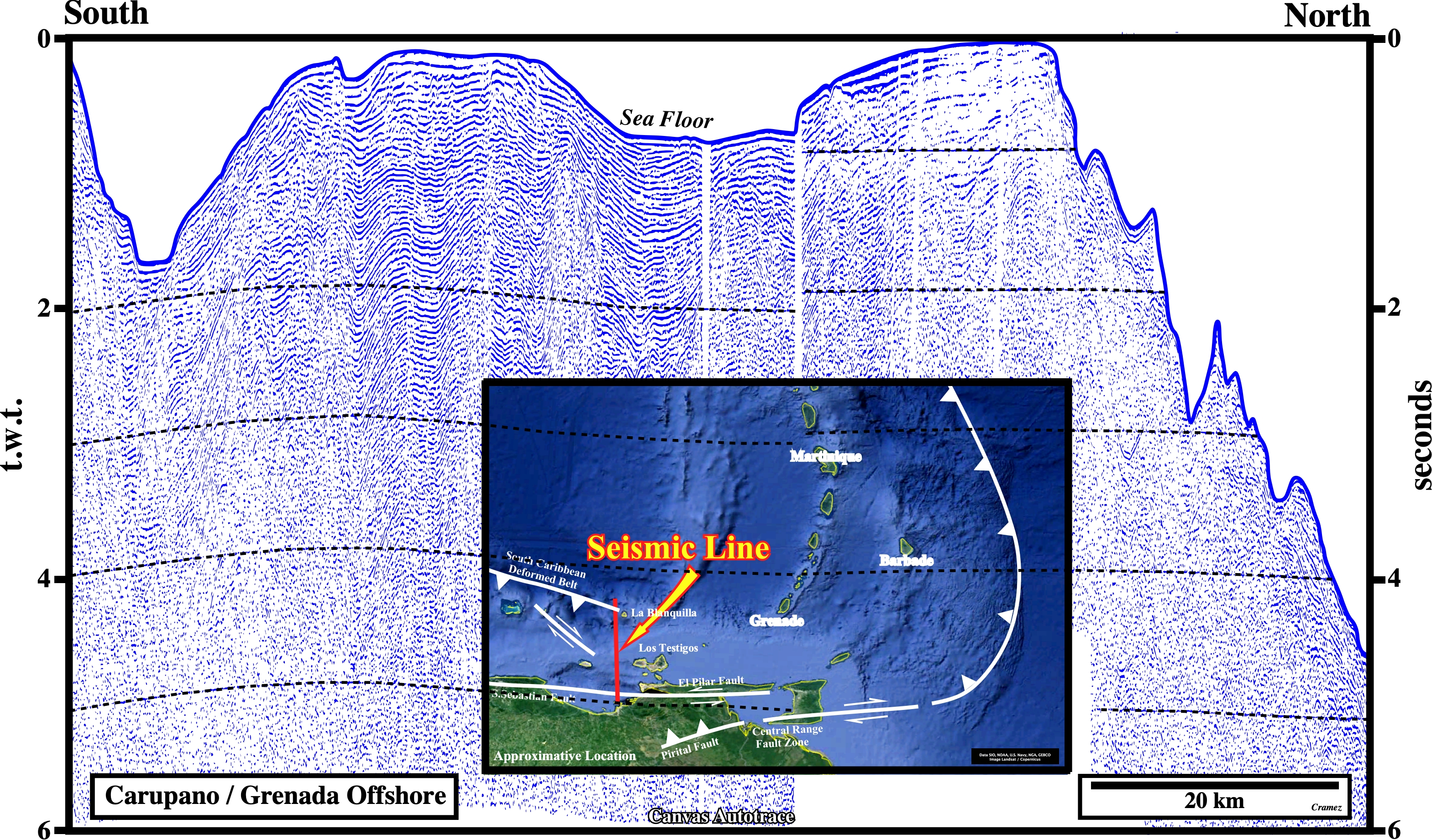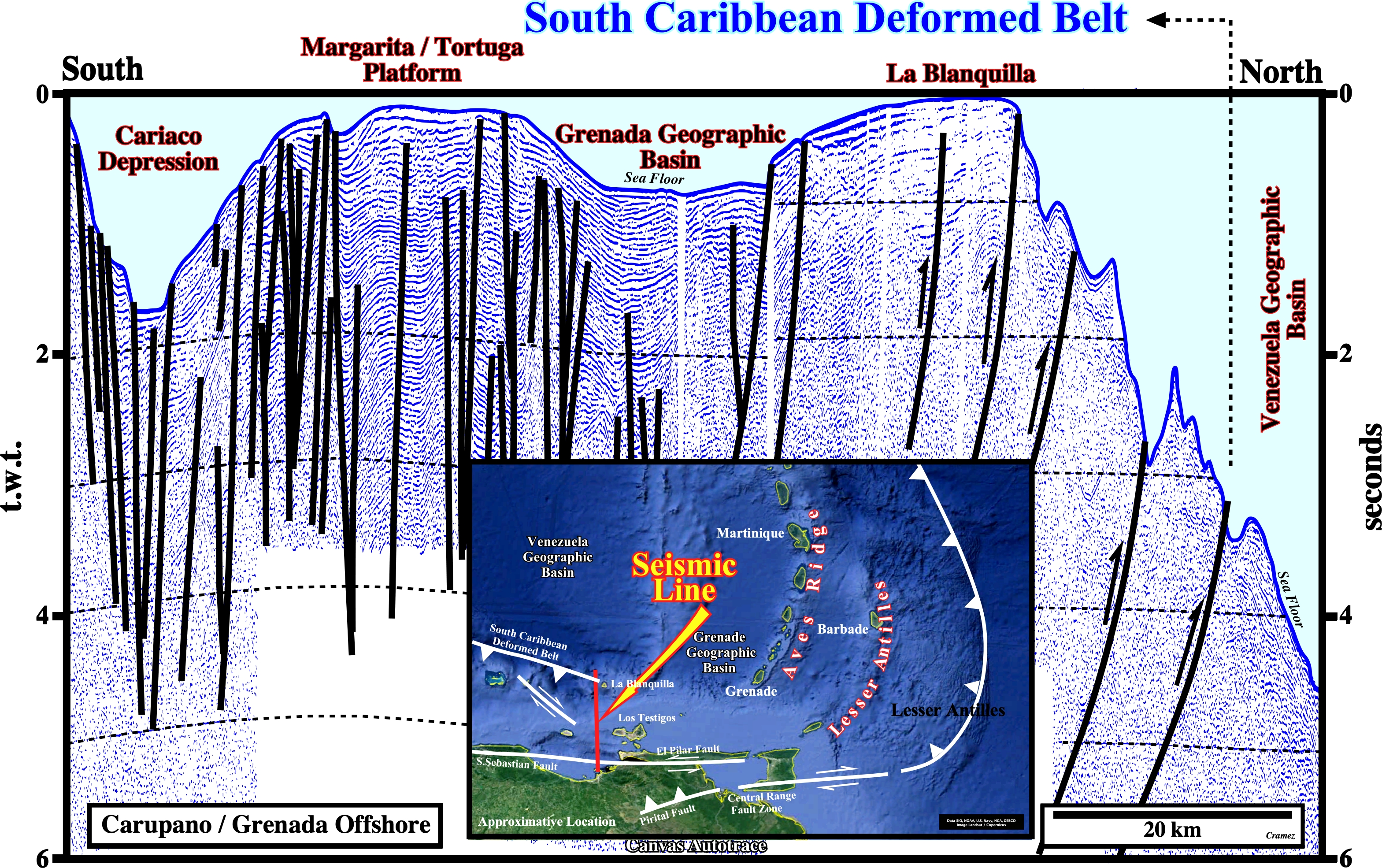

Cariaco / Margarita Platform

This tectonic sketch is a tentative representation of the global geological setting of the South America lithospheric plate, in which two main subduction zones are clearly visible, which bound the Meso-Cenozoic megasuture. The northern subduction zone is a B-Type subduction (Benioff type), in which the descending plate is oceanic. B-type subductions are highlighted by an: (i) Oceanic trench ; (ii) Alignment of volcanoes and (iii) Deformation in the overriding plate, which causes, often, the formation of mountains. The southern subduction zone is A-type subduction zone (Ampferer type), in which the descending plate is continental. A-type subduction are characterized by a foreland basin (foredeep). The area of interest (Cariaco /Margarita Platform), located westward of Trinidad, lies within the Meso-Cenozoic megasuture. It is highly shortened, as depicted on the N-S geological cross-section illustrated on the next plate. The presence of W-E strike-slip faults, as El Polar fault, creates, mainly, two types of sedimentary basins : (i) "Great Basin" Type and (ii) California-Type. The "Great Basin"-Type Basins are dominated by a complex tectonics linked to a pair of mega-shears where tilted blocks individualize a large number of small basins (e.g., North Venezuela). This tilting geometry contrasts with that of Californian-type basins which are most often uniform and very flat. The Californian-type basins are similar to the continental backarc basins of Pannonian-type. Both develop over a thinned continental crust in association with normal listric faults or shears, having a strong thermal flux. In Venezuela, the Gulf of Paria geographic basin and the Cariaco geographic basin are good examples of California-type basins.

This geological cross-section highlights, over the Precambrian/ Paleozoic substratum, several sedimentary basins superposed or stacking in time and space. From bottom to top, we can recognize: (i) Jurassic rift-type basins, developed during the lengthening of the Gondwana continental crust, which presage is breakdown, and limited between the pre-rifting and the breakup unconformities ; (ii) The Atlantic-type divergent margin, which age ranges between the Cretaceous and Paleogene ; (iii) A Paleogene-Neogene foredeep basin and (iv) A Recent folded belt formed by sediments of all ages. The sediments were deformed by major shortenings. The first one, in sequence, above a decollement surface of the thrust faults, and the second by reactivation of the old Jurassic normal faults, from which the Pirital fault is a typical example. The El Furrial, under the Pirital fault, is associated with the first shortening. The Pirital fault, more recent in its actual configuration than the El Furrial fault, involves the basement is associated with the second shortening. The normal fault in the Oficina area are associated with the flexural subsidence of the foredeep basin. The strike-slip faults of the El Pilar complex are rooted in reverse faults of last phase of shortening.


This preliminary tentative geological interpretation of a Canvas autotrace of an old composite seismic line, shows the Venezuela Californian-type basins are developed on the South Caribbean deformed belt, which in terms of realm of subsidence (basic concept in the Bally and Snelson basin classification) seems to correspond to an old accretionary prism. In fact, the substratum of the Venezuela geographic basin of the Caribbean plate (see location map), i.e, the oceanic crust, probably, plunge under the continental crust forming a B-Type subduction zone responsible of the La Blanquilla accretionary wedge (obviously, after the collision of the Caribbean-Colombian Oceanic Plateau (CCOP) with the Cretaceous great arc, at around 85 M, which caused a subduction reversal, a passive ride of the crust in the upper plate behind the arc seems to occur (Wright, J. E. & Wyld, A. J., 2011).
Send E-mails to carlos.cramez@bluewin.ch with comments and suggestions to improve this atlas.
Copyright © 2001 CCramez
Last update:
2022